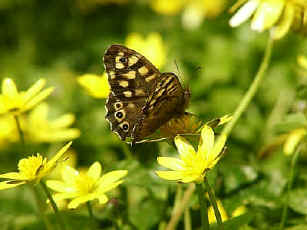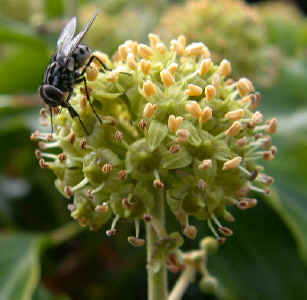Woodlands &
Biodiversity

Biodiversity is a term which simply means 'the variety of
life'.
The range of biodiversity in woodlands is largely determined by four factors. These
are:
1. The amount of light available beneath the dominant tree canopy;
2. Whether the trees are native or non-native species;
3. Structural diversity in the woodland - the number of different microhabitats
available.
4. The age of the trees in the woodland, as well as the duration of continual
wooded cover;
The level of biodiversity in a woodland is greatly influenced by variations in light intensity. A variety of light levels from deep shade, through to open, well-lit clearings will encourage the development of a wide range of plant species beneath the main tree canopy. Species with very different light requirements can then inhabit the same general woodland area, albeit in slightly different places. If there are many different species of plants, then it usually follows that there will also be many different species of animals. This is because each plant species generally has its own range of animal species associated with it. These will in turn provide food for yet other animal species. Woodland butterflies provide a good illustration of the importance of light for overall biodiversity in a woodland. Woodlands support more than three-quarters of all British butterfly species. Of these, two-thirds are currently under threat. This is partly because of the overall loss of woodland habitats, but also as a result of the decline in traditional woodland management techniques such as coppicing. The caterpillars of most of the woodland butterflies actually feed on herbaceous plants and grasses growing on the woodland floor. Of the 30-40 breeding species which might be found in southern woods in Britain (the number declines northwards for climatic reasons), only 4 species have caterpillars which actually feed on trees! The decline in management practices such as coppicing in woodlands, has meant that many woods have become dark, dense places, lacking the openings and clearings which allow for the development of a diverse ground flora. As a result, the food plants of many of the butterflies are absent, as are the butterflies themselves. In this case, the trees are not as important as the spaces between them. Restoring a range of butterfly species to a woodland may therefore involve removing trees rather than planting them.
The herbaceous flora in a wood is also an important food source for the adult butterflies, as they require flowers to nectar upon. Favourite flowers for nectaring woodland butterflies are Bramble, thistles, Ragwort and Fleabane.
The fruits and seeds of the woodland plants are also important sources of food for invertebrates, birds and small mammals. Different plants flower and set seed over widely differing timescales and seasons. The greater the variety of plants present, the longer the period when flowers and or seeds/fruits will be available to feed the woodland animals and birds. There is also less chance that the failure of a particular species to flower, or fruit successfully one year will devastate the food supply, because there will be other alternatives available. This is not to say that areas where there is good tree cover and shade should not also be present in a woodland. These areas are important for a variety of other plant and animal species which cannot survive in more open areas. The cover and shade provide a damp, cool, sheltered microclimate in which certain species thrive. This includes a number of invertebrates, mosses, liverworts and ferns. It even extends to animals living in rotting wood, in that logs left to decay in full sun usually have a comparatively meagre biodiversity compared to those positioned in shade. |
Woodlands & Biodiversity Contents


